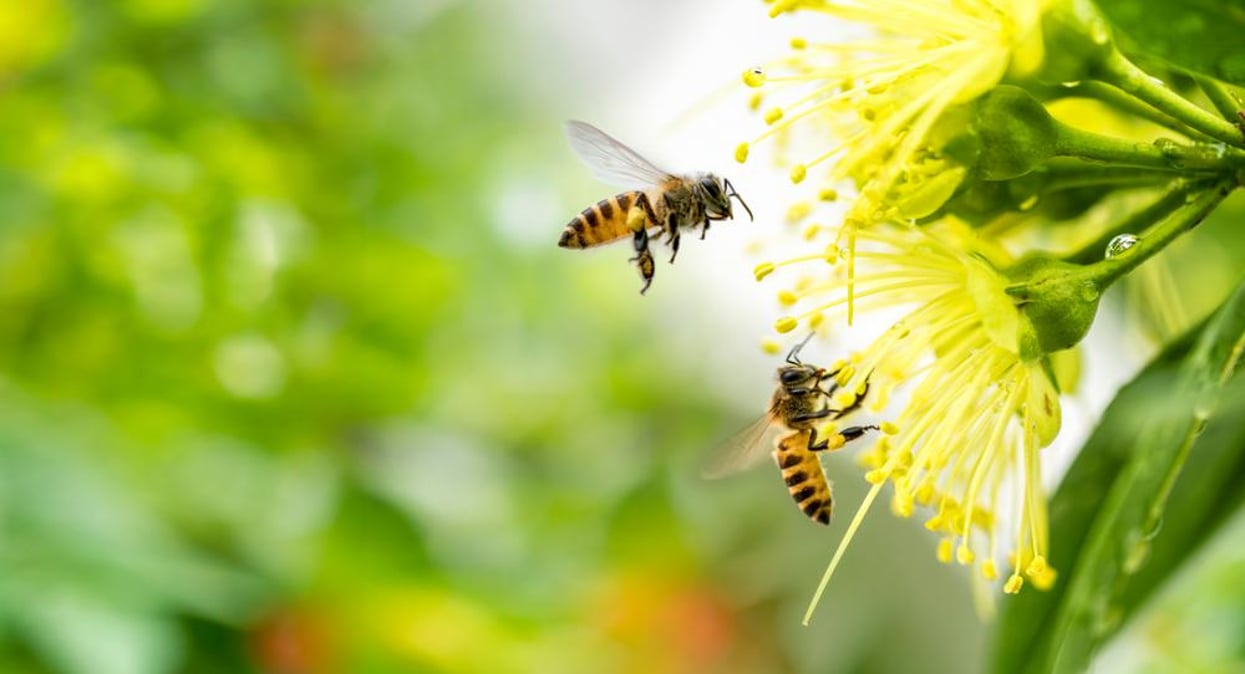Bee Stings

What should I do if my child is stung by a bee or wasp?
A bee's stinger works like an automatic pump -- the longer it stays in, the more venom it releases -- so get it out as quickly as you can. Look for a little black dot in the center of the bite, and scrape it off with a fingernail or pull it out with your fingers. Try not to squeeze the stinger, though, because that could release more venom. Once you've removed the stinger, wash the sting area with soap and water. Then apply an ice pack for 15 minutes or so to minimize swelling and relieve pain. Give your child acetaminophen immediately to relieve pain and burning and children's Benadryl to reduce swelling. You can also apply calamine lotion to the sting area.
Generally, stings cause painful red bumps that appear almost immediately, and swelling may increase for up to 24 hours. Luckily, the pain usually begins to go away after a few hours. But keep a close eye on your child over the next few days. If swelling continues to increase after 24 hours -- or if swelling in the hand or foot spreads past the wrist or ankle -- call your physician.
If your child is stung in the mouth, seek immediate medical attention, because stings in the mucous membranes in the mouth can cause swelling that blocks airways.
Can bee stings cause dangerous allergic reactions?
On rare occasions, children or adults can have an allergic reaction called anaphylaxis. The reaction, which involves the whole body, can be deadly. Symptoms include the following:
- Rash over many parts of the body
- Shortness of breath and tightness in the chest
- Wheezing
- Dizziness or fainting
- Swollen tongue or face
- Nausea or vomiting
If these symptoms occur, call 911 immediately for emergency medical care. If your child has ever had a serious reaction to a bee sting, you should carry an Epi-pen, an injectable epinephrine kit, with you at all times, and have her carry one once she's old enough.
Multiple stings can also be dangerous to children. The amount of venom from ten or more stings can cause vomiting, diarrhea, headache, and fever. This is not anaphylaxis, but it is serious enough to call your doctor immediately.
What's the best way to avoid insect stings?
Unfortunately, insect repellents don't deter bees and wasps. Your best bet is to encourage your kids to steer clear of stinging insects. Make sure they avoid playing in gardens or orchards, which attract bees. Since many stings occur on bare feet, make sure also that your kids wear shoes while playing outside. Wearing white or light-colored solid fabrics can also help, since bees tend to be attracted to dark colors and flowered prints. Avoid scented soaps, perfumes, or hair spray. Don't let kids drink from open soda cans outside -- they can attract unwelcome stinging visitors.
References
Robert H. Pantell M.D., James F. Fries M.D., Donald M. Vickery M.D., Taking Care of Your Child: A Parent's Illustrated Guide to Complete Medical Care. Da Capo Lifelong Books.
Bug Bites and Stings. Nemours Foundation. http://kidshealth.org/parent/firstaid_safe/emergen...
Image: Shutterstock
Related Posts
La obesidad y el sobrepeso reducen las tasas de supervivencia en la leucemia infantil
MIÉRCOLES, 12 de julio de 2023 (HealthDay News) -- Una creciente epidemia de...
Physician’s Briefing Weekly Coronavirus Roundup
Here is what the editors at Physician's Briefing chose as the most important...
Africa’s Contribution to HIV Research Low Relative to Its Burden
MONDAY, June 26, 2023 (HealthDay News) -- Africa's contribution to global HIV...
Spinal Cord Stimulation Gives Big Boost to Arm Function After Stroke
MONDAY, Feb. 20, 2023 (HealthDay News) -- It’s a brutal reality that confronts...
